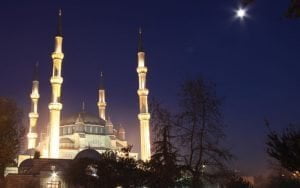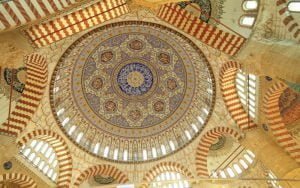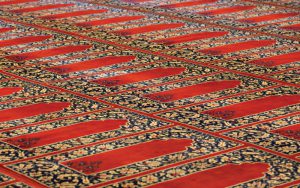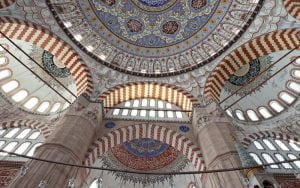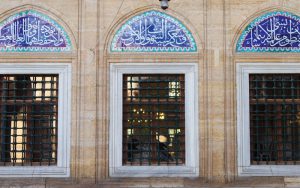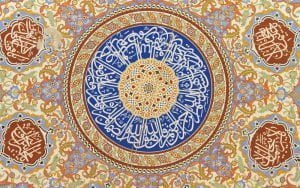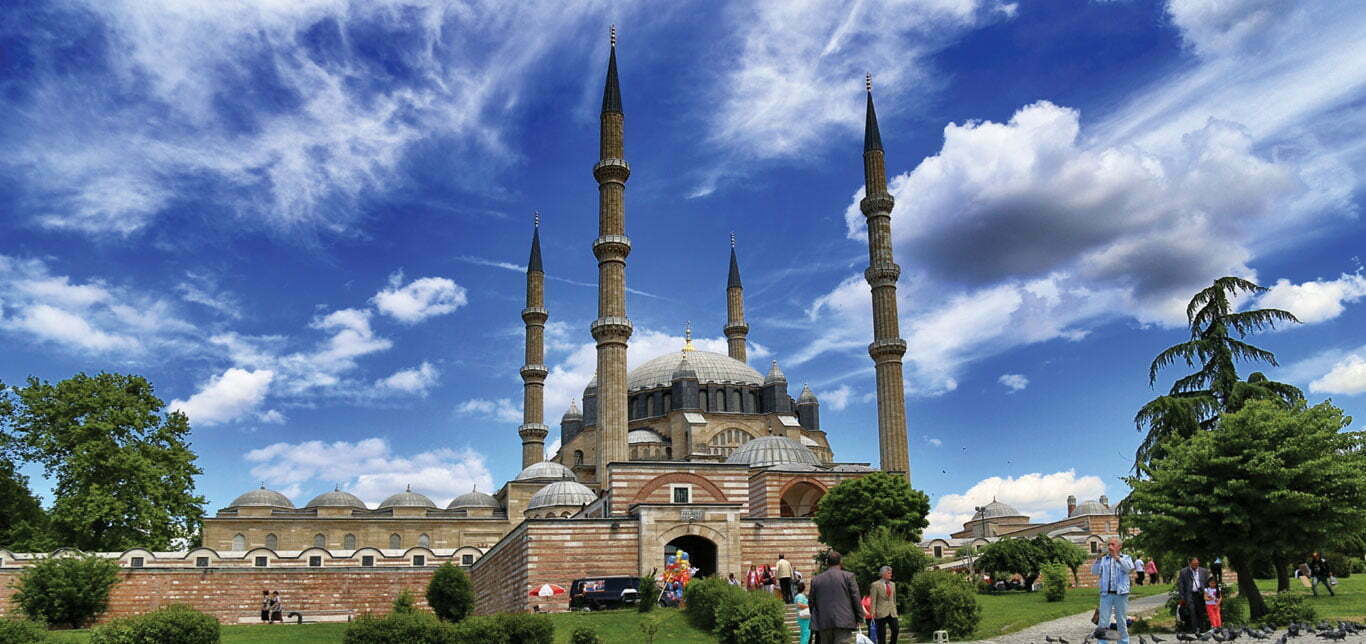
Selimiye Mosque and Complex
It is an imposing mosque rising towards its single great dome with its four towering slender minarets, magnificently decorated interior, library with manuscripts, meticulous craftsmanship, bright Iznik tiles and educational institutions combined with marble courtyard, outer courtyard and covered bazaar. Selimiye Mosque and Complex, its dominant architectural composition, represents the culmination of the great work of Sinan, the most distinguished architect of the Ottoman Empire. Due to these features, it was selected to the UNESCO WORLD HERITAGE list on 29 June 2011.
The monumental structure, which Mimar Sinan built at the age of 80 and called my masterpiece, is one of the masterpieces of Ottoman-Turkish art and the history of world architecture. The ownership of the building is in the Sultan Selim Foundation. It is in Edirne-Center Yeni Mahalle. The mosque, which is the symbol of Edirne and the Ottoman Empire, is located in the center of the city, in the place formerly called Sarıbayır and Kavak Square. It is known that Yıldırım Bayezid had a palace built here before. It was built in 1569±1575 by the order of Sultan Selim II.
The building, which stands out from afar with its four minarets, shows that Mimar Sinan was also a master urbanist, with the choice of the place where it was built. The mosque, which is made of cut stone, covers an area of 1,620 m2 with its interior and a total area of 2,475 m2. Described as the structure built on the largest space in the history of architecture, Selimiye Mosque is 43.28 m high from the ground. which is 31.30m. It attracts attention with its large dome. The Dome, which is larger than that of Hagia Sophia, is 6 m. It sits on 8 large pillars connected by arches of width. Four at the corners and one half dome at the Mihrab support the central dome. The building is illuminated by 32 small windows in the drum of the dome and numerous windows in 6 rows on the faces. It is the most successful example of the 8-base mosque plan created by Mimar Sinan.
In front of it is a portico surrounded by 18 domes and 16 columns. In the middle, there is an elegant marble fountain. The place of the Last Congregation has 5 domes on 6 thick round columns. The dome above the marble-worked entrance door is grooved, while the others are flat. 3.80 m. of the mosque. in diameter, 70.89 m. It has four elegant minarets with three balconies. There is only one way to the balconies in the entrance direction, and in the other two, the three balconies are accessed by separate roads. In addition to the inaccessibility of its architectural features, the mosque is also extremely important with its decorative features such as stone, marble, tile and wooden mother-of-pearl. Its mihrab and pulpit are masterpieces of marble workmanship. There is a muezzin mahfil, which sits on 12 marble columns in the middle. There is a library on the right. To the left of the mihrab is the Hünkar Mahfili. The original hand-drawn works on the ceiling of the lower part of this show all the vitality of the period.
The original hand-drawn works that adorn the domes and arches are cleaned during the repairs. The tile decorations of the building have a special place in Ottoman and world art. XVI. These tiles, which are the most beautiful examples of century tiling, are under glaze technique and were made in Iznik. The mihrab wall, the pulpit pavilion wall, the Hünkar Mahfili walls, the women’s lounge, the arch corners, the window pediments in the direction of the qibla are decorated with tiles. There are red, blue flower and leaf ornaments on the large tile panels on the mihrab wall, cartridges with white, thuluth alhem sura written on dark blue above the windows, and a wide verse border at the top. The tile panel in the Minber Mansion is decorated with leaves, hyacinths and tulips under the tree with red and white spring flowers in the middle on dark blue.
Minarets: The minarets, which are located at the four corners of the mosque, are 70.89 meters high, with a diameter of 380 centimeters, each with three special balconies. The height of the minarets, including the realm, is 84 meters according to some sources and 85 meters according to others. The balconies of the minarets two near the door of the sentence can be reached from three different ways. The other two minarets have a single staircase. The stone carvings of the two minarets in the front are hollow, and the carvings of the minarets in the middle are raised. The fact that the minarets are close to the dome makes the mosque appear as if it is reaching towards the sky. The most important feature of this mosque is that it can be seen from all sides of Edirne.
Dome; A technique never seen before in any mosque or ancient temple was used in Selimiye, which is located on a hill. Although the main dome rises above stepped half domes in previous domed structures, Selimiye Mosque was covered with a single lebi with a height of 43.25 meters and a diameter of 31.25 meters. The dome is placed on a pulley based on 8 columns. The pulley is attached to the elephant feet by 6 meter wide belts. With the width and spaciousness that Sinan gives to the interior that he covers in this way, he ensures that the space can be easily understood at once. The dome also determines the outline of the exterior of the mosque.
Inverted Tulip Motif; There is an inverted tulip motif under one of the marble feet of the muezzin mahfil of the mosque. According to rumors, there was a tulip garden on the land where the mosque was to be built. The owner of this land did not want his land to be sold at first. Finally, he asked Mimar Sinan to have a tulip motif in the mosque and sold his land. Mimar Sinan also made the tulip motif in reverse. The tulip motif represents a tulip garden on this plot, and the reverse represents the owner’s mischief.
Courtyard: The building has 3 doors opening to the north, south and courtyard. The inner courtyard is decorated with porticoes and domes. In the middle of the courtyard, there is a fountain, carefully crafted from marble. In the outer courtyard, there is a primary school, darül kurra, darül hadith, madrasah and soup kitchen. Today, the primary school is used as a children’s library and the madrasa is used as a museum. In the past, the mosque was illuminated with torches. The soot from the torches was coming out through a specially made hole to create an air flow.
Although the tomb of Mohammed Adil Shah in Bicapur, India, is covered by the world’s largest dome with a diameter of 44 meters, the place has a very poor and lifeless effect as the light is poorly arranged. Since the Pantheon cathedral in Rome is a very large but cylindrical structure, the space is monotonous, almost tiring the eyes. st. In the Pier church, on the other hand, the dome suddenly plunges deep, disrupting the tranquility of the space, and the outer dome, together with the enormous lantern, hides the inadequacy of the inner dome. However, Selimiye Mosque, the balanced space that has been entered from all sides to its last limits, is in a state of wonderful tranquility and drags everyone who enters with its different charm and does not leave it again.
The space of Hagia Sophia disappears vaguely towards the side corridors and galleries, and where it ends cannot be understood. However, in Selimiye Mosque, the balanced space stretched to its last limits from all sides is in a state of wonderful stillness and drags everyone who enters with its different charms and does not let it go again. The fact that the outer dome fell a little flat among the high minarets is due to the fact that the place was covered with a single dome. Interior Decorations; Marble, tile and calligraphy workmanship of the mosque is also important. The interior of the building is decorated with Iznik tiles. The sultan’s mahfili, right under the great dome, has 12 marble columns and is 2 meters high. Some of the tiles were dismantled and taken to Moscow by the Russian general Mihail Skobelev in the 1877-1878 Ottoman-Russian War.


